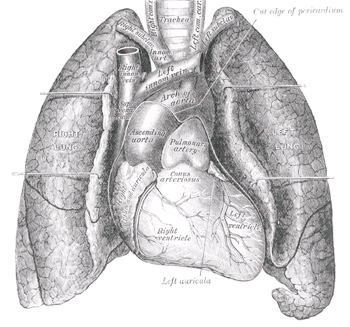Data Suggests Possible Protective Effect
By Fred Gardner
Marijuana smoking —“even heavy longterm use”— does not cause cancer of the lung, upper airways, or esophagus, Donald Tashkin, MD, reported at this year’s meeting of the International Cannabinoid Research Society.
Coming from Tashkin, this conclusion had extra significance for the assembled drug-company and university-based scientists (most of whom get funding from the U.S. National Institute on Drug Abuse). Over the years, Tashkin’s lab at UCLA has produced irrefutable evidence of the damage that marijuana smoke wreaks on bronchial tissue.

It is Tashkin’s research that the Drug Czar’s office cites in ads linking marijuana to lung cancer. Tashkin himself has long believed in a causal relationship, despite a study in which Stephen Sidney, MD, examined the files of some 64,000 Kaiser patients and found that marijuana users did not develop lung cancer at a higher rate or die earlier than non-users.
Of five smaller studies on the question, only two —involving a total of about 300 patients— concluded that marijuana smoking causes lung cancer.
Tashkin decided to settle the question by conducting a large, population-based, case-controlled study. “Our major hypothesis,” he told the ICRS, “was that heavy, longterm use of marijuana will increase the risk of lung and upper-airways cancers.”
The Los Angeles County Cancer Surveillance program provided Tashkin’s team with the names of 1,209 L.A. residents aged 59 or younger with cancer (611 lung, 403 oral/pharyngeal, 90 laryngeal, 108 esophageal).
Interviewers collected extensive lifetime histories of marijuana, tobacco, alcohol and other drug use, and data on diet, occupational exposures, family history of cancer, and various “socio-demographic factors.”
Exposure to marijuana was measured in “joint years” —average number of joints per day x years that number smoked. Thus if a person had smoked two joints a day for 15 years they’d have consumed for 30 j-yrs.
Controls were found based on age, gender and neighborhood. Among them, 46% had never used marijuana, 31% had used for less than one joint year, 12% had used for 1-10 j-yrs, 5% had used 10-30 j-yrs, 2% had used for 30-60 j-yrs, and 3% had used for more than 60 j-yrs.
Tashkin controlled for tobacco use and calculated the relative risk of marijuana use resulting in lung and upper airways cancers. A relative risk ratio of .72 means that for every 100 non-users who get lung cancer, only 72 people who smoke get lung cancer. All the odds ratios in Tashkin’s study turned out to be less than one!
Compared with subjects who had used less than one joint year, the estimated odds ratios for lung cancer were .78 for 1-10 j-yrs [according to the abstract book and .66 according to notes from the talk]; .74 for 10-30 j-yrs; .85 for 30-60 j-yrs; and 0.81 for more than 60 j-yrs.
The estimated odds ratios for oral/pharyngeal cancers were 0.92 for 1-10 j-yrs; 0.89 for 10-30 j-yrs; 0.81 for 30-60 j-yrs; and 1.0 for more than 60 j-yrs. “Similar, though less precise results were obtained for the other cancer sites,” Tashkin reported. “We found absolutely no suggestion of a dose response.”
The data on tobacco use, as expected, revealed “a very potent effect and a clear dose-response relationship —a 21-fold greater risk of developing lung cancer if you smoke more than two packs a day.” Similarly high odds obtained for oral/pharyngeal cancer, laryngeal cancer and esophageal cancer. “So, in summary” Tashkin concluded, “we failed to observe a positive association of marijuana use and other potential confounders.”
There was time for only one question, said the moderator, and San Francisco oncologist Donald Abrams, M.D., was already at the microphone: “You don’t see any positive correlation, but in at least one category, it almost looked like there was a negative correlation, i.e., a protective effect. Could you comment on that?” (Abrams was referring to Tash-kin’s lung-cancer data for marijuana-only smokers, 1-10 j-yrs.)
“ Yes,” said Tashkin. “The odds ratios are less than one almost consistently, and in one category that relationship was significant, but I think that it would be difficult to extract from these data the conclusion that marijuana is protective against lung cancer. But that is not an unreasonable hypothesis.”













